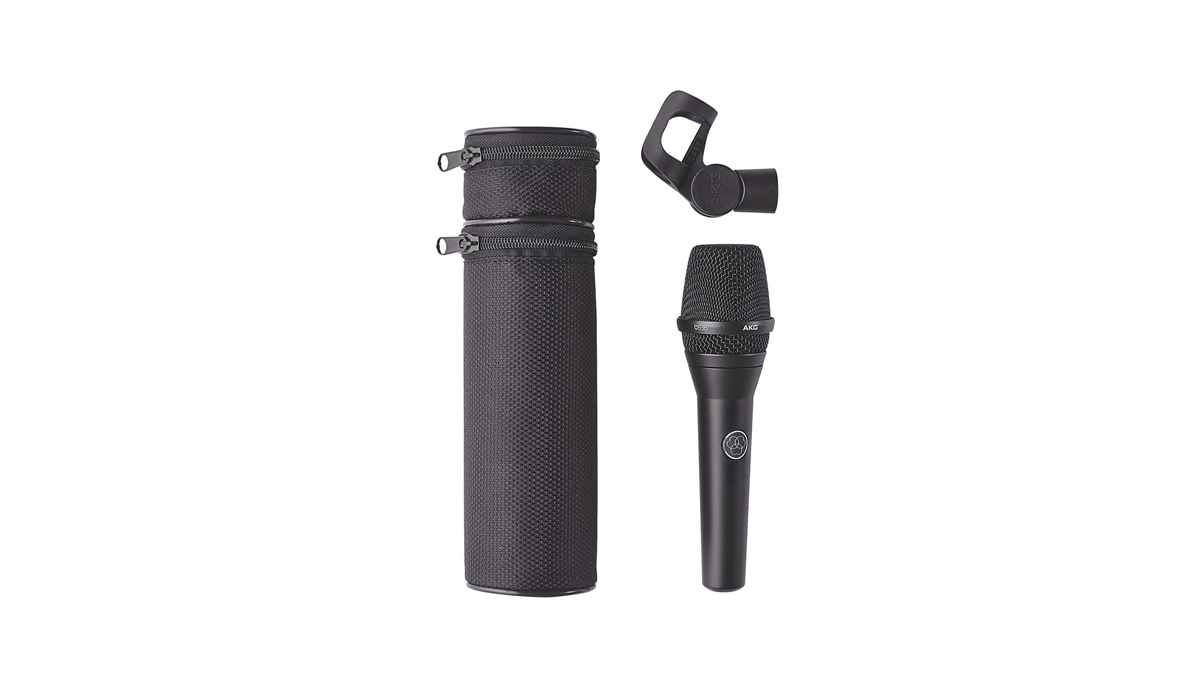MusicRadar Verdict
A handheld vocal mic’s job is to reproduce the most important instrument in tricky settings; this does so with uncommon ease.
Pros
- +
Clear, well balanced response straight to the preamp.
- +
Superb in terms of feedback rejection.
- +
Excellent off-axis attenuation.
Cons
- -
You have to pay for quality.
MusicRadar's got your back
As a condenser mic, the C636 is inherently more complex than its dynamic siblings, a complexity that comes at a cost in both R&D and production.
Issues with feedback rejection and handling noise have to be balanced against tradeoffs in sound quality. Behind the simple black exterior and lightness in hand, the C636 boasts serious design chops to give it the ‘Master Reference’ moniker, but is it deserved?
In short, yes. The sound is clear and full, far more linear and ‘real’ than its dynamic mic counterparts. The high frequency range is present and well defined, without the harsh hype and phase-shift peakiness that some (cheaper) condenser mics either display or attempt to mask with an overall HF pull-down.
At the other end of the scale there is a realistic richness that neither booms, resonates or masks the source. All in all this microphone works almost boringly well at reproducing the voice without artifice. Obviously you want the best-sounding vocal possible, but a high quality response also pays off with regard to engineering, requiring less EQ, de-essing and general soundcheck fiddling.
All in all this mic works almost boringly well
On stage, or when working with monitors in a live studio session, feedback is Enemy No.1, exacerbated by peaky frequency response curves that may flatter tonally but wreak havoc when amplified. The C636 is remarkably well designed in this way, and I had to work hard to conjure any feedback at all.
Getting a condenser capsule to sound good and reject feedback is no mean feat, which explains the cost. The other big problem is the effect of plosives, and again real effort has gone into keeping this at bay through the multilayer pop screen inside the mesh basket. While we’re on problem solving, the C636 is also impressive at handling noise, or lack thereof.
Though the pickup pattern is cardioid, the off-axis rejection is abnormally impressive and, as the literature promises, uniform (with regard to frequency). We couldn’t find even a hyper-cardioid mic in my collection to match it. This goes some way to explaining the excellent feedback rejection. For live studio sessions this is a great boon, allowing vocalists to be closer to their bands and better performances.
Handheld mics just aren’t as sexy as old school ribbons or esoteric large diaphragm condensers, but they are fundamental in so much of the audio production world, on stage or in the studio. AKG have always pushed forward in this area, from the D19/190s of yesteryear to the current D5/7s and C5/7s, as well as the successful C535 which this model updates, carrying on a strong tradition of innovation and quality. The C636 may look quite plain, but it has a lot going on ‘under the mesh’ to create an impressive solution to the multi-faceted problems of live vocal capture. So, yeah, ‘Master Reference’ seems apt, as is the price.
- More of the best vocal mics
“KIKI BOY 2025”: Frank Ocean appears to be teasing something... or other
“This is great. I knew I was getting to them! I’m so happy. It’s such a good feeling”: Spotify bites back at Kate Nash
“The included sample content is not only unique but sonically amazing, as it always was”: Spitfire Audio BBC Radiophonic Workshop review










